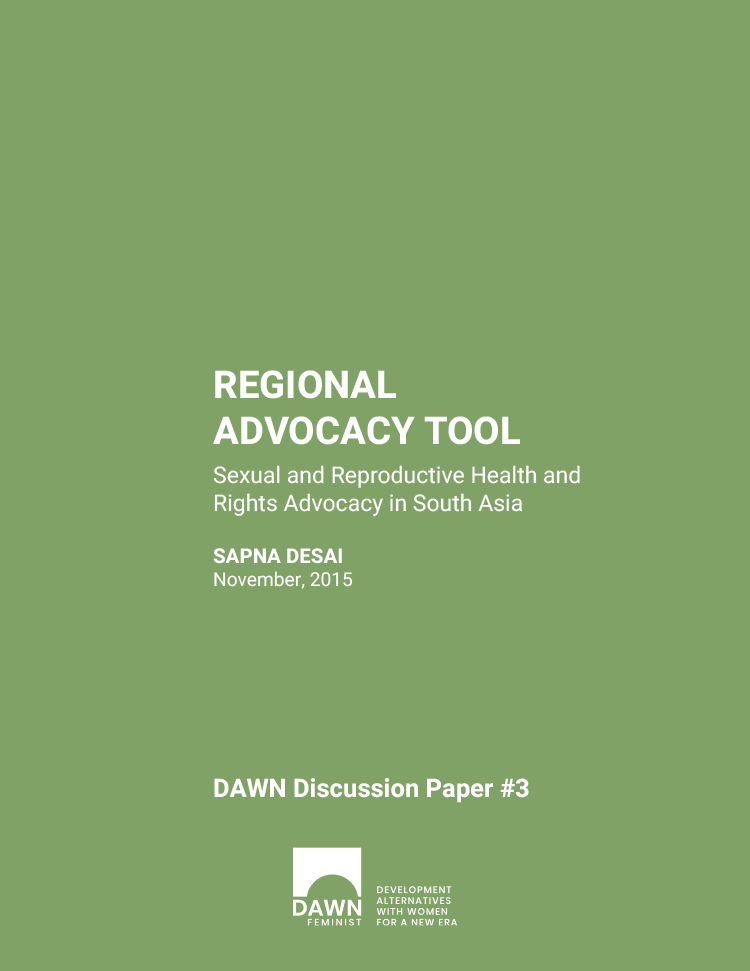Executive Summary
In the twenty years since the International Conference on Population and
Development (ICPD), policy in South Asia has shifted away from solely populationdriven targets to wider approaches grounded in a sexual and reproductive health and rights (SRHR) agenda. Programmatically, countries in the region have improved indicators related to life expectancy, infant and maternal mortality, total fertility rates and contraceptive prevalence. While countries have made strides in addressing contentious issues such as safe abortion and youth sexual health, maternal and child health have dominated health programmes across the region. Further, implementation barriers, weakened health systems and waning global and national priority for SRHR
have impeded progress towards realising the commitments made in Cairo.
This review seeks to assess advances, barriers and challenges for the ICPD agenda in South Asia in an effort to identify areas for renewed action and advocacy, while highlighting progress at the national and regional level. It reviews the status of commitments to access to comprehensive and integrated sexual and reproductive health (SRH) services, SRH needs and rights of young people and reproductive and sexual rights through a selection of issues and country case studies:
i) access to family planning and safe abortion services in Sri Lanka and Pakistan;
ii) sexual and
reproductive health and rights of young people in India and Nepal;
iii-a) sterilisation in India and iii-b) privatisation across South Asia.
Family planning and abortion.
The provision of family planning services varies across the region, with a range of approaches to method mix and outreach. Sri Lanka, for example, has consistently reached women and men with a range of methods through integrated health service delivery. Notwithstanding barriers such as outreach in previously conflict-affected areas and variable service quality, the country’s success in providing comprehensive and integrated family planning is a model for the region. Pakistan, though committed to improved family planning in policy, has struggled to improve access to services due to lack of human resources, commodity shortfalls and a severely weakened health
system. In the case of abortion, despite diversity in legal status across the region, implementation barriers, lack of trained providers and poor quality services have impeded access to safe abortion. Thus in both Sri Lanka – where laws are amongst the most restrictive – and Pakistan, with more legal flexibility, high incidence of unsafe abortion is a pressing health concern that has not yet been accorded priority. While activists struggle to create national awareness, lack of global donor support for safe abortion remains an obstacle across the region.
SRHR of young people
Global momentum, regional advocacy and national mobilisation have coalesced to ensure a place for youth SRHR on policy agendas in South Asia. In both India and Nepal, adolescent reproductive and sexual health programmes have been initiated to provide youth-friendly services to all young people, irrespective of marital status, disseminate information on SRH, improve capacity of providers, and establish peerbased education. Programme implementation has varied widely, however, with the majority of youth seeking services from informal providers. Sexuality education in India was effectively banned in several states, whereas Nepal promotes information for all students in schools. Sociocultural barriers amongst educators, lack of innovative approaches and weak outreach at the community level have resulted in spotty access to reliable information. Despite a difference in policy, programme level barriers are quite similar in both countries – with calls for greater outreach and communication, mobilisation and multi-sectoral approaches as the way forward.
Reproductive rights
In India, ICPD was projected as the end to a historical focus on sterilisation as the primary method of family planning. Yet recent analyses indicate that targets and incentives for sterilisation, with a focus almost entirely on women, are common. The persistence of female sterilisation as the predominant mode of family planning and new approaches to popularise insertion of intra-uterine devices (IUD) underscore the continued challenges to incorporation of a rights-based approach within local programme realities.
Given the common challenges of implementation of SRH services across South Asia, analysis of health systems provides insight into underlying barriers to realisation of ICPD. With the exception of Sri Lanka, all of South Asia has undergone health sector reforms that resulted in wide scale privatisation of services. The region has been marked by outsourced family planning and reproductive health services to non-state entities in public private partnerships and a mushrooming of informal and formal private providers. While partnership arrangements have increased access to family
planning, for example, they have also contributed to greater fragmentation and inequity within sexual and reproductive health services on the whole. Informal providers have filled critical gaps in services for women and young people in particular – but lack adequate regulation of quality or cost. The wider health systems environment, particularly priority-setting and oversight / regulation, must be addressed with great urgency in order to address gaps in implementation of SRH services.
Challenges and action: A regional view
According to civil society champions, a rights-based approach to comprehensive sexual and reproductive health has largely only been achieved in policy, theory and rhetoric across South Asia. Implementation of quality services and envisioned approaches is weak in almost every country, beset with political, social and practical obstacles. Recommendations for integrated service delivery, improved human resources and training, community and youth outreach and monitoring and regulation
are all dependent on creating an environment conducive to SRHR programmes at the national and local level. The paths for advocacy and action moving forward are thus defined by three common challenges: weak health systems characterised by poor infrastructure and privatisation; MDG-induced international shifts toward maternal health and family planning; and the need to reposition SRHR within new global, regional and national agendas.

